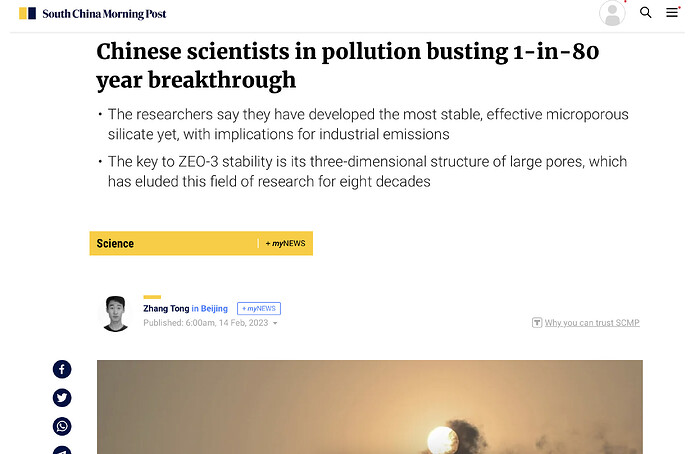- 来自中国和西班牙的科学家们在寻找一种更实惠、更有效的方法,利用被称为沸石的微孔硅酸盐减少有害工业排放方面取得了罕见的突破。
- 研究人员开发了迄今为止最多孔和最稳定的沸石,称为ZEO-3,与其他沸石和金属有机框架相比,它在去除挥发性有机化合物(VOCs)方面具有优异的性能。
- 研究人员使用纯二氧化硅,设计了ZEO-3,使其孔隙沿三维方向存在,使其有更好的能力让大分子反应和停留。
- ZEO-3的结构使其具有超高的稳定性,这可能在石油化工和其他许多需要从废气中去除造成空气污染的有机分子的领域有重要的工业应用。
- 这种新的沸石的成分是纯二氧化硅,孔隙达到10埃以上,使它比以前的沸石更稳定。
- ZEO-3的密度与水相似,其孔隙铺开后可以填满一个足球场。
- Scientists from China and Spain have made a rare breakthrough in the search for a more affordable and effective way to reduce harmful industrial emissions using microporous silicates called zeolites.
- The researchers have developed the most porous and stable zeolite yet, called ZEO-3, which has excellent performance in removing volatile organic compounds (VOCs) compared to other zeolites and metal-organic frameworks.
- Using pure silica, the researchers designed ZEO-3 so that its pores exist along three dimensions, giving it a better capacity for large molecules to react and stay.
- ZEO-3’s structure gives it ultra-high stability, which could have important industrial applications in petrochemicals and many other fields that need to remove organic molecules from their exhaust gases that contribute to air pollution.
- The new zeolite has a composition of pure silica and pores that reach more than 10 angstroms, making it more stable than previous zeolites.
- ZEO-3’s density is similar to water and its pores can fill a soccer field when spread out.
链接:Chinese scientists in pollution-busting 1-in-80 year breakthrough | South China Morning Post
